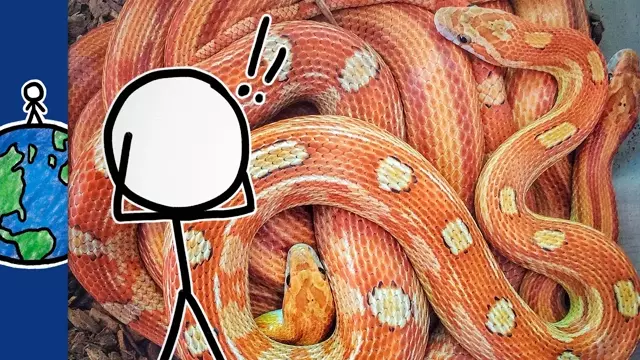2017-03-02
[public] 621K views, 12.9K likes, dislikes audio only
Snakes occupy a special place in the human brain because they’re so weird.
If you liked this week’s video, we think you might also like:
Vsauce2 on Dragons and Snakes and Humans: /youtube/video/6grLJyqIM8E
LEARN MORE
**************
To learn more about this topic, start your googling with these keywords:
- Ophidiophobia: The abnormal fear of snakes
- Lateral Undulation: Waves of lateral bending through the body that propel the snake forward.
- Trichromatic Vision: Three color receptors in the eye that allow the animal to see a wider spectrum of colors.
- Electroencephalogram: A non-invasive method of measuring electrical activity in the brain.
CREDITS
*********
Script Writer: David Goldenberg
Script Editor: Kate Yoshida
Video Illustrator: Qingyang Chen
Video Director: Kate Yoshida
Video Narrator: Kate Yoshida
With Contributions From: Emily Elert, Henry Reich, Alex Reich, Ever Salazar, Peter Reich
Music by: Nathaniel Schroeder
MinuteEarth is produced by Neptune Studios LLC
SUPPORT MINUTEEARTH
**************************
If you like what we do, you can help us!:
- Become our patron: https://patreon.com/MinuteEarth
- Our merch: http://dftba.com/minuteearth
- Our book: https://minuteearth.com/books
- Share this video with your friends and family
- Leave us a comment (we read them!)
OUR LINKS
************
Youtube | https://youtube.com/MinuteEarth
TikTok | https://tiktok.com/@minuteearth
Twitter | https://twitter.com/MinuteEarth
Instagram | https://instagram.com/minute_earth
Facebook | https://facebook.com/Minuteearth
Website | https://minuteearth.com
Apple Podcasts| https://podcasts.apple.com/us/podcast/minuteearth/id649211176
REFERENCES
**************
Isbell, L. (2004). Snakes as agents of evolutionary change in primate brains. Journal of Human Evolution 51 (1-35). https://www.ncbi.nlm.nih.gov/pubmed/16545427
LoBue, V., and DeLoache, J. (2008). Detecting the Snake in the Grass: Attention to Fear-Relevant Stimuli by Adults and Young Children. Psychological Science 19:3 (284-289). https://www.ncbi.nlm.nih.gov/pubmed/18315802
Van Lea, W., Isbelle, L., Matsumotoa, J., Nguyen, J., Horia, E., Maiorc, R., Tomazc, R., Trana, A., Onoa, T., and Nishijoa, H. (2013) Pulvinar neurons reveal neurobiological evidence of past selection for rapid detection of snakes. PNAS 110:47 (19000-19005). http://www.pnas.org/content/110/47/19000
Kawai, N., and He, H. (2016). Breaking Snake Camouflage: Humans Detect Snakes More Accurately than Other Animals under Less Discernible Visual Conditions. PLoS ONE 11:10. http://journals.plos.org/plosone/article?id=10.1371/journal.pone.0164342
https://www.patreon.com/minuteearth
/youtube/video/4DF94Wvtekk
/youtube/channel/UCeiYXex_fwgYDonaTcSIk6w
https://www.patreon.com/minuteearth

